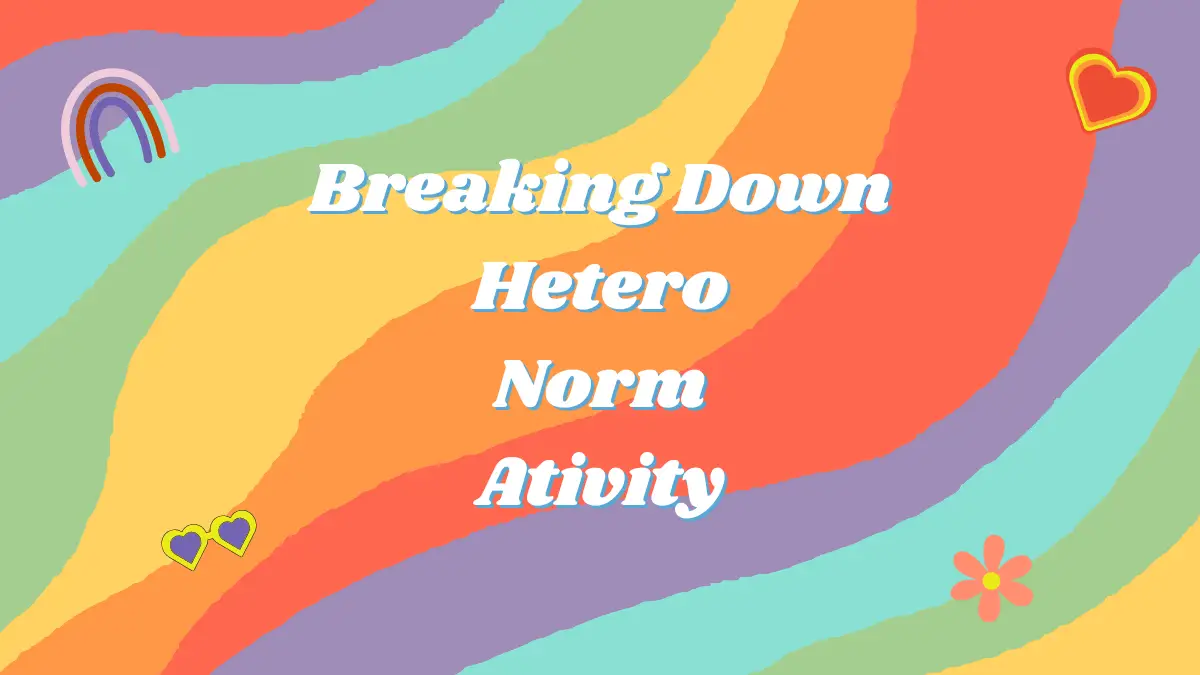Heteronormativity is a term used to describe the societal assumption that heterosexuality is the default or “normal” sexual orientation. This assumption means that heterosexuality is seen as the normative standard, and any other sexual orientation is seen as deviating from that norm, subjecting it to “othering.” This belief is pervasive in many aspects of our culture, from media representation to legal and political structures. Heteronormativity has harmful effects on people who do not fit into this norm, leading to discrimination, exclusion, and erasure of their experiences.
Examples of Heteronormativity
One specific example of heteronormativity can be seen in the institution of marriage. In many societies, marriage is considered the ultimate expression of love and commitment, but it is also often seen as exclusively between a man and a woman. This belief is based on the assumption that heterosexuality is the only valid form of romantic love and that anything outside of that is cannot be accepted. This belief has led to the exclusion of same-sex couples from marriage and the denial of legal rights and protections that are afforded to heterosexual couples.
The assumption of heteronormativity can also be seen in media representation. In film, television, and other forms of media, heterosexuality is often portrayed as the only form of romantic or sexual attraction. This lack of representation can lead to feelings of exclusion for those who do not identify as heterosexual. Such feeling of exclusion can be particularly damaging for young people who are still developing their sense of self and may feel isolated or ashamed for not conforming to the heteronormative standard.
Heteronormativity can also be seen in language and everyday conversation. Phrases such as “husband and wife” or “boyfriend and girlfriend” assume that everyone is heterosexual, identifies within the gender binary, and is in a monogamous relationship. These phrases exclude those who do not identify as heterosexual, gender non-conforming folx, and those who are in non-monogamous relationships. The use of gendered pronouns, such as “he” and “she,” also reinforces the idea that there are only two genders and excludes those who identify as non-binary or gender non-conforming.
The Harmful Effects of Heteronormativity
The harmful effects of heteronormativity can be seen in the discrimination and exclusion faced by members of the LGBTQ+ community. LGBTQ+ individuals face higher rates of homelessness, job discrimination, and hate crimes compared to their heterosexual counterparts. This discrimination is fueled by the belief that heterosexuality is the only valid form of attraction and that anything outside of that is deviant.
For many years, the idea of same-sex marriage was considered taboo and was not recognized by the law in many countries. However, in recent years, there has been a shift towards recognizing the validity and importance of same-sex relationships. The fight for marriage equality has challenged the heteronormative assumption that only heterosexual couples should have access to legal recognition and protections.
Ways to Challenge Heteronormativity
One way to challenge heteronormativity is to actively seek out and promote LGBTQ+ representation in media and entertainment. Seeking out such content can involve watching TV shows and movies that feature LGBTQ+ characters, reading books by LGBTQ+ authors, and supporting LGBTQ+ artists and musicians. By doing so, we can help to normalize LGBTQ+ identities and reduce the stigma and discrimination faced by members of this community. Check out Goodread’s list of LGBTQ authored books to get started!
Another way to challenge heteronormativity is to use gender-neutral language and pronouns. Instead of assuming someone’s gender based on their appearance or using binary pronouns like “he” or “she,” we can use gender-neutral language like “they” or “them.” This small effort sends a message that gender is a spectrum and that we respect and acknowledge all gender identities. Check out this Pronouns 101 resource from Queer Events to learn more about gender-neutral pronouns and why they are important.
It is also important to challenge heteronormativity by being an ally to the LGBTQ+ community. This can involve speaking out against homophobic or transphobic comments, actively listening to and supporting LGBTQ+ individuals, and advocating for LGBTQ+ rights and equality. By standing up for the rights and dignity of LGBTQ+ people, we can help to create a more inclusive and accepting society for all. Check out GLAAD’s 10 Ways to Be and Ally & a Friend for more tips on how to show up for the LGBTQ+ community.
Concluding Thoughts on Heteronormativity
It is important to recognize the harmful effects of heteronormativity and work towards creating a more inclusive and accepting society. By challenging the assumption that heterosexuality is the only valid form of love and attraction, we can create a more diverse and compassionate community that celebrates and respects all sexual orientations and gender identities. This includes using inclusive language, supporting LGBTQ+ rights and advocacy organizations, and educating ourselves and others on the harmful effects of heteronormativity.







